From Ritual to Art: Preserving Congolese Dance
An Interview with Muisi-kongo Malonga
BY EMMALY WIEDERHOLT
Muisi-kongo Malonga is the artistic director of Fua Dia Congo in the Bay Area and is one of the foremost keepers of Congolese dance traditions in the US. She is dedicated to preserving culture and cultivating the healing power of African arts traditions. Here, she discusses her focus as director of Fua Dia Congo, her perspective on preserving a living artistic tradition, and her emphasis on creating opportunities for community engagement.
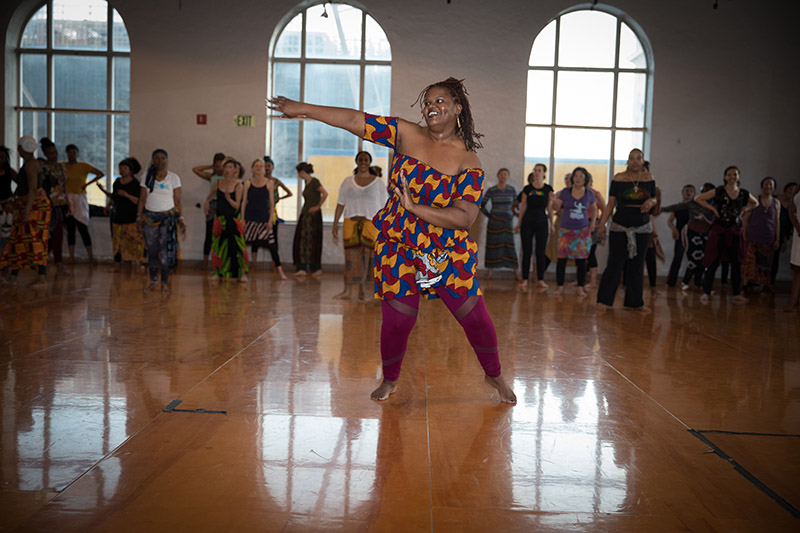
Photo by JT Faraji
~~
Can you share with me a little about your dance history and what shaped who you are as an artist? I understand your parents were two dance heavyweights – Malonga Casquelourd and Dr. Faye McNair-Knox. How did that influence your own relationship with dance growing up?
I was born into dance, and sometimes when you’re born into something, your passion for or interest in it is not automatic. Sometimes your relationship unfolds over time. My dance practice is traditional Congolese dance. My father, Ta Malonga Casquelourd, founded Fua Dia Congo (Fua) in 1977 in East Palo Alto, then called Little Nairobi. My mother, Dr. Faye McNair-Knox – a scholar, educator and community leader – was a principal dancer and founding member of Fua. The dance is what brought my parents together, and the rich and vibrant soil of Little Nairobi is what seeded the legacy of which I am a keeper.
I should clarify that traditional African dance in general cannot simply be classified as dance; it’s inextricably linked to the drum, to song, to spirit and ritual. The dances carry story, history, values, and essential cultural information. I grew up in the 80s and 90s and experienced Fua Dia Congo as the center of the Congolese dance community in the US.
My dance unfolded in phases. I was shy by nature, but managed to dance a little from the ages of three to seven before inhibitions set in. Then I became more distant from and awkward in dance; and it became quite literally a chore. As the family vocation, it was not exciting to me and required me to press pass my timid nature. Around the age of 11 or 12, my interest and curiosity about the dance started to grow, specifically when my dad founded a youth company. Once I got to dance with my peers and not just with adults, my passion for dance was fully ignited. And it’s remained with me since then.
As director of Fua Dia Congo for the past nine years, how have you continued and furthered the cultural preservation work begun in 1977 by your parents?
Since so much of our work is centered around preserving culture, a lot of it is figuring out how to reimagine how we remember. We tell the same story a lot of the time but ask: How do we explore it from different angles?
For example, we did an exciting work back in 2010 based on a well-known folk song entitled “Nao Tse tsa.” The song tells the tale of a young woman who drowns at the banks of a river and leaves a small baby behind. If you’re from Congo, chances are you know the song. Outside of Congo, many heard a version of this song recorded by Miriam Makeba. Nao tse tsa finds the young woman’s spirit calling to her own mother to take care of the baby and keep the baby safe. We drew inspiration from this song and told the story of that girl child who grows up. We weaved what we know about culture and what it would be like to come of age without parents and we represented those challenges within the dance, drum, song, and storytelling. That’s a good example of what we do.
I find myself constantly trying to figure out how to honor the original purpose and intention of the dance and create a framework to respect that form and add story so audiences can understand the essence of what it’s supposed to be.
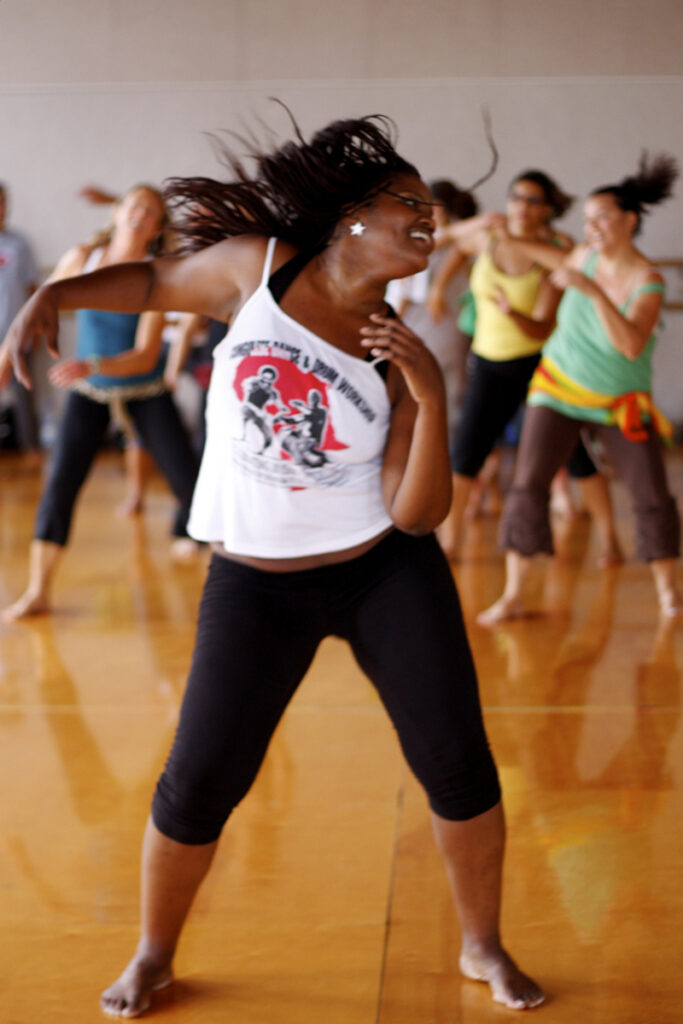
Photo by Bethanie Hines
I understand you’re in the process of premiering a new piece, Congo Dance A Nairobi Blues, a site-specific dance-theater production. Can you share more about the impetus behind the piece and your choreographic process?
I grew up in Little Nairobi, more commonly known as East Palo Alto, CA. A unique and powerful cultural renaissance took place there in the 60s and 70s that deeply informed Fua Dia Congo’s beginnings, its artistry, activism, and commitment to cultural preservation. Little Nairobi was an unincorporated area in what is now known as Silicon Valley, where a large influx of African American families settled as a result of the Great Migration. My maternal family, the McNairs, was one of the families that left the South in search of freedom, opportunity, and escape from Jim Crow. Freedom seeking and resilient families like mine converged with brilliant and visionary scholars of African descent attending nearby Stanford University to forge a unique community where the type of world-change people were seeking at the time was boldly executed on a local level. It was so important to me to lift both the story of Fua Dia Congo/Congolese Dance in the US and the story of Little Nairobi. Through Congo Dance A Nairobi Blues, I am seeking to tell these intersecting stories by using interviews and oral history from multi-generational families who share their firsthand experiences growing up in the community and as part of the Fua story. These narratives capture and help shape a site-specific production that is installed at different historical locations around East Palo Alto.
It’s exciting work that has enabled me to learn more about my own history and the legacies I am connected to. It’s also interesting to hear from my peers whose parents were also founding members of Fua Dia Congo. Most of all, I want to introduce this history to people who are unfamiliar with the legacy of Fua Dia Congo, specifically folks in East Palo Alto who might be new to the community. With changing demographics and an exodus of long-time residents, there is more urgency around ensuring this important history is not forgotten. There aren’t a lot of traces left of what happened in this community. Congo Dance A Nairobi Blues started as a site-specific live performance installation taking place at four historical or personally meaningful community locations. In the spirit of preservation, it has now evolved to include a docu-short.
You are often described as being one of the foremost keepers of Congolese dance traditions in the US. What does it mean to you to be a preserver and cultural caretaker of a living and evolving art form?
It means holding on to what’s ancient and sacred and then translating and making it accessible to the next generation. It means finding new ways to make connections that are relevant to the culture so that the next generation can be ignited with the passion to carry it on. It also means that the dance practice is not necessarily first. It’s very much about the community building aspect. They go hand in hand with the dance and hold equal importance. I’ve learned that more over time. As a younger dancer when I didn’t bear the responsibility of holding space for others, it was just about the dance and the passion. But now I see how important it is to invest time in people and create space where people feel welcome.
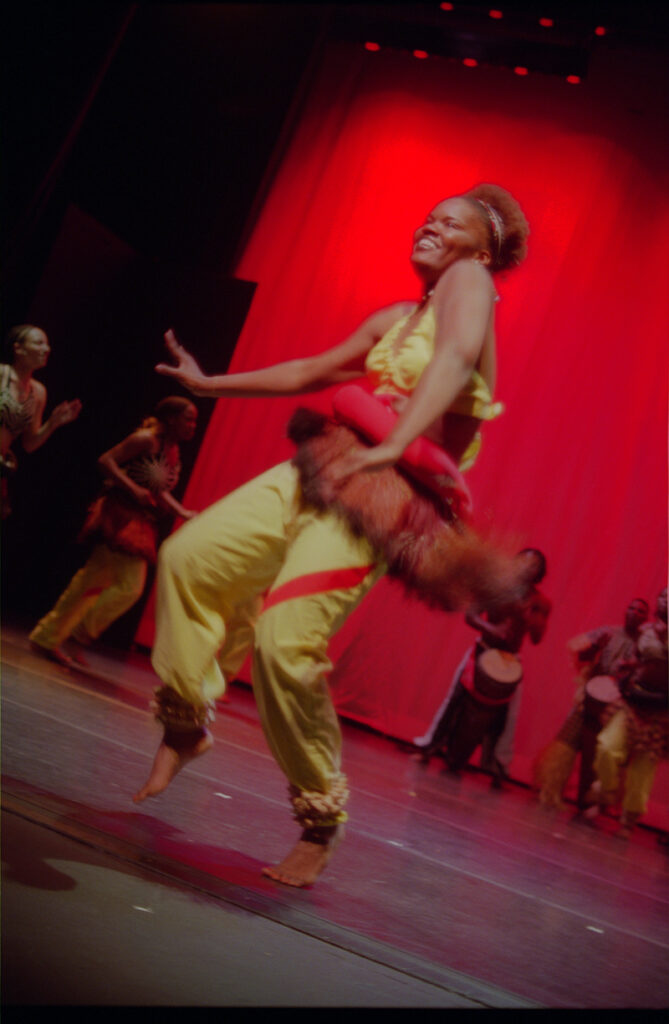
Photo by Kimara Dixon
Since the Bay Area has changed so much demographically, what does community building mean in the face of intense gentrification?
It’s really about digging my heels in further and creating more vibrant offerings. There is a level of advocacy required to keep people engaged and invested. Fua Dia Congo does this by creating new ways for them to engage if they are displaced. What role can we play to bring people back into the fold? How do we stay informed around housing? We occupy a role that has to be adaptable. We have the ear of the people, so we need to be ready to engage on different levels to keep the community unified and vibrant. The changing demographics and crazy housing market all have an impact. It’s pushing people to the outskirts, because they can’t afford to stay in this community. We just have to figure out ways to keep people invested. Does that mean we move? Or does it mean we try to do what we can to offer free or affordable programming when people are traveling from further locations? We’re constantly trying to figure out how to be more accessible and come closer to the people, so it reaches them even as they are being pushed out in other ways.
From your perspective, is Congolese dance different in the US than in the parts of central Africa in which it is practiced? If so, how?
If you move anything from its source, there will be differences. In the US, we’re in studios and crossing the floor. Maybe in the Congo it happens in a more organic way and it’s happening as part of ritual, whereas we’re translating the ritual. We’re crossing studio floors and stages, whereas in traditional settings dancers are typically more stationary and often in a circle. But I’d say there are more similarities than differences.
When something becomes performative as opposed to just happening as part of its cultural function, there’s always a difference. But the people who are practicing this art form in the Congo and the people of Congolese/African descent who are here in the US, even several generations removed, are connected to the traditions in a deeply spiritual way. In all dance, there is an element of spirituality. In African dance, however, spirit is deeply ingrained in the fiber. And because of this spiritual component, we are all tapping into something greater that is not bound by physical proximity.
While we are indeed culture bearers, we are also performers, charged with translating the dances from ritual to art with an audience to consider. In a ritual setting, time is not limited. One rhythm, one dance can last for hours and hours. But in the US, we’re in a microwave culture, so you can’t expect an audience to sit at Palace of Fine Arts for three to four hours and stay awake, let alone engaged. In its most authentic form, traditional African dance has no audience. It is more fluid. Dancers and observers are engaged in a circular experience, and at any given moment, their roles may switch. When you are creating and performing works outside of the above context for an audience that doesn’t share the same connection or concept of a dance or tradition, there will always be a push and pull for the artist to share the art as is or to translate it for those who are unfamiliar.
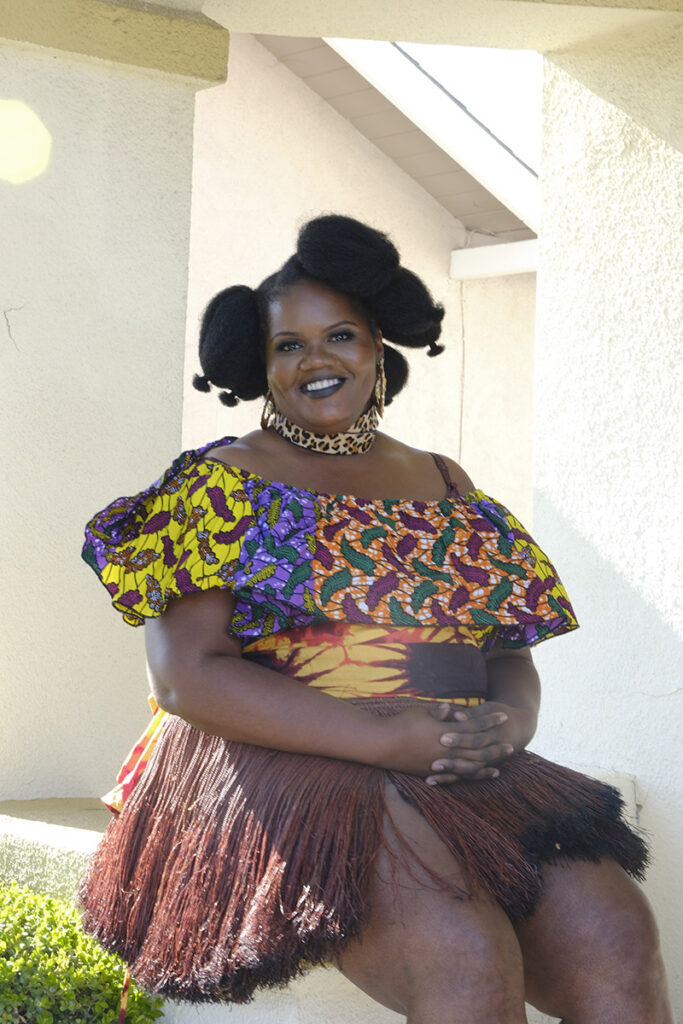
Photo by Sasha Kelly (House of Malico)
I understand you are founder of the grassroots arts presenting organization BottleTree Culture, which seeks to reanimate the presence of African cultural arts as a change agent in East Palo Alto. Can you share more about BottleTree Culture and some of its programming?
BottleTree Culture is committed to preserving East Palo Alto’s connection to African cultural art forms, as well as preserving East Palo Alto’s legacy of Congolese dance and the dances of the diaspora. It was a place in the Bay Area where people went for culture and to engage. It was the place to be. Many people don’t know this history, and it’s not as accessible as it once was. I’m moved to preserve what my parents helped to build, as well as all my ancestors before them.
BottleTree Culture is a grassroots arts presenting organization and the primary vehicle through which all my East Palo Alto specific cultural arts programming is filtered. I partner with the city of East Palo Alto and other nonprofit organizations to offer free programming to the community and engage multiple generations, elders, and young people coming together in the arts. BottleTree Culture seeks to create space for people of African descent and other people of color to witness and engage in art forms that reflect heritage. The programming includes dance, song, storytelling, and music.
Last year we had an amazing summer season. We partnered with the city of East Palo Alto and got generous support from Silicon Valley Community Foundation, Chan Zuckerberg Initiative and The Grove Foundation. We presented “Makinu Summer Dance & Music Series,” a season of free music and dance programming. We brought in local, national, and international guest artists who came in and taught percussion, song, and dance. East Palo Alto has a significant Latinx community, and we were able to bridge connections with residents of African descent by presenting Afro-Peruvian artists to share art relevant to both communities. That was exciting to see. We also presented international visiting artists from France. It was well received, and people felt like they were receiving a gift because the programming was free for anyone who wanted to come. We will launch Makinu again this fall, as it has been expanded to a year-round program.
I understand that you also teach extensively around the Bay Area. What do you hope to impart to your students about Congolese dance? Is there some specific aspect of the culture or artistry you hope they take away from your classes?
The healing. I always do my best to share the history and meaning behind the dances. There are specific movements and rhythms purposed at healing, and I invite my students to plug their minds, bodies, and spirits into that intention. I might say, “We’re doing this rhythm from this ethnic group. It is a dance and ritual that seeks to bring about healing in the spirit, so that it can extend to the body and elsewhere, in alignment with what Kongo people believe.” I share this so they are informed, empowered, present, and hopefully choose to make the healing personal. Students can ask: What do I want to heal in my life?
What do I want to heal in my body? How can I add my prayers to this experience? In the mind and spirit, how can I tap into the power of what we’re doing? If I have anything I want to share about Congolese dance, it’s a powerful source of healing. Add to that the experience of coming together and dancing in community. Extending your heart to the people around you is also a powerful source of healing.
Any other thoughts?
I teach at the Malonga Casquelourd Center for Arts in Oakland, CA, every Saturday from 1-2:30. We offer Congolese drumming before the class at 11:30. All are welcome; you don’t need a background in dance or drum. That’s my open invitation to anyone who wants to come and experience the healing of central African dance.
~~
To learn more, visit www.muisikongo.com
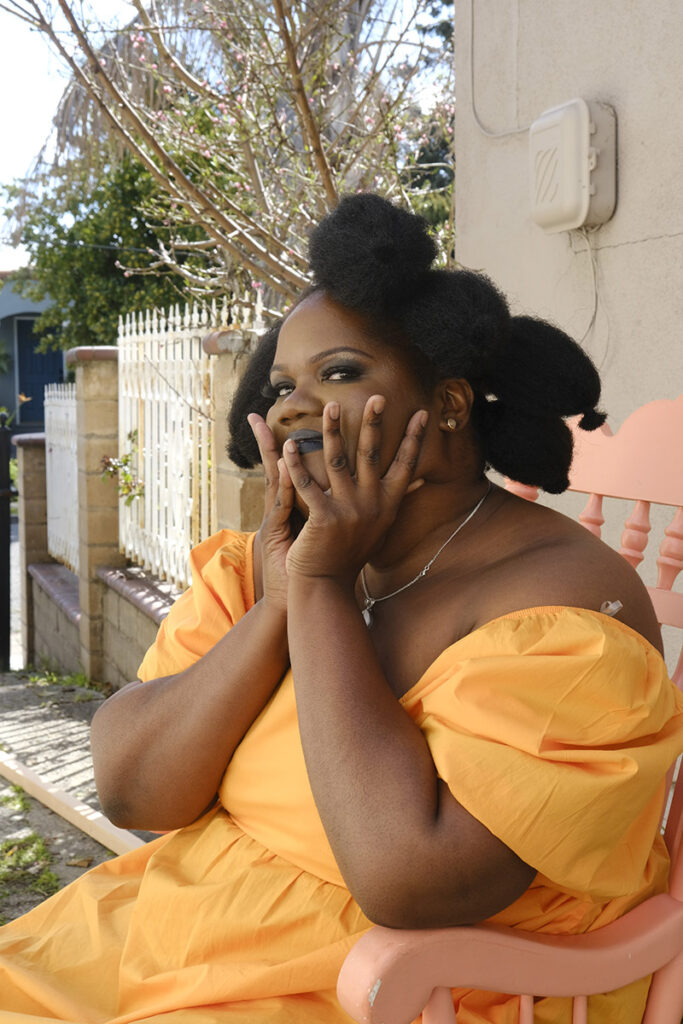
Photo by Sasha Kelly (House of Malico)
